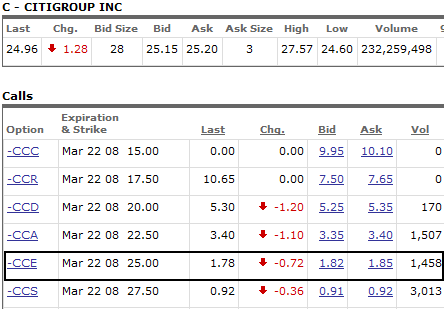What is a Straddle?
A straddle option strategy is a basic volatility strategy that banks on the idea that the underlying security is going to move significantly in one direction, even if you do not know which way. The straddle is a direction neutral, medium risk, unlimited reward strategy. It is used by many traders right before earnings are announced; they expect a large move but do not know which way. The strategy calls for buying at the money calls and also buying at the money puts. This is a net debit transaction and your risk is limited to the amount of money you pay for the two options cumulatively.
On the other side of the coin, a trader may believe that stock will tread sideways rather than making a substantial move in either direction. This trader might elect to sell the straddle short, or basically sell the ATM calls and puts at the same time.
Straddle Risk Characteristics
Let's review the basic straddle risk characteristics graph so that we can better understand the risks and rewards associated to this strategy. As opposed to the other option strategies we have discussed, you can see that the straddle has two breakeven points. Remember, you can profit if the stock moves substantially in either direction.
Options strategy - Long Straddle
_________________________________________________________

Long Straddle
Since you are buying both of the options, your risk is limited to the the amount you pay for both combined:
Risk = Call Premium + Put Premium
Since this is a net credit transaction with two long options, the breakeven in either direction is just the strike price +/- Options premiums.
Breakeven on the Upside (*b2 in diagram) = Strike Price + Call Premium + Put Premium
Breakeven on the Downside (*b1 in diagram) = Strike Price - Call Premium - Put Premium
The profit potential of this strategy is unlimited after breakeven.
To be precise, the total profit/loss at expiration can be calculated with the following two formulas:
Profit/Loss at Expiration = Absolute Value(Security Closing Price - Strike Price) - Risk
Straddle Example
Let's use Citigroup (C) to create a straddle example.
Call Option Chain:

Put Option Chain:
The stock is trading at $24.96 as of today's closing price. Therefore, we will buy the two month, at the money, option at $25. It is currently Jan of 2008 and I selected options with 2 months till expiration. I did this for example purposes since the three month chain is not available as of yet. Typically, you want to allow yourself at least 3 months of time for this trade to work out. Remember, once the option has less than 30 days, the time premium (theta) starts to decay at a more rapid pace. You want to allow yourself enough time in case the trade does not work out immediately. Personally, I do not hold straddle's that are 30 days left till expiration. At that point, the security has not made the move I was looking for and I cut my losses while the time premium is still reasonably high. Secondly, if you are trading the straddle for an earnings release and the stock does not react with a strong move, you should consider selling the straddle after a couple days pass with no movement.
To set up the Citi straddle, we will pay $1.85 for the 25 calls and $2.04 for the 25 put. Notice how the price of the put is greater even when the stock is trading right near the strike. This occurs due to the market premium that is being given to protection on the downside. The market is currently getting hammered and there is a large demand for puts. Supply and demand forces have an influence on option prices.
In any case, we are paying $3.89 for both options and this becomes the risk of the straddle. The expectation is that the stock will break above $28.89 or break below $21.11 before options expiration. If either scenario occurs, this straddle will be in a profit position. Ideally, you want to look for at least a 1:1 reward to risk ratio. Therefore, we want to see Citigroup above 32.78 or below $17.22 to make it worth your time and risk.
In conclusion, the straddle is a great idea if you expect the security to move substantially, but do not know which way. It can come with a relatively high cost but your risk is limited to what you put into it, as opposed to a short straddle. Remember that you are playing the expectation for volatility to increase and if it does not when you expect it to, think about selling the straddle to avoid bleeding time value.
Related Topics
Options strategies:
----------- EDUCATION ---------
-------TRADING METHODS ------
--------- FOR TRADERS ----------
-------------- OTHER ------------
---------------------------------------------

_________________________________________________________________________________________________________________________________________

